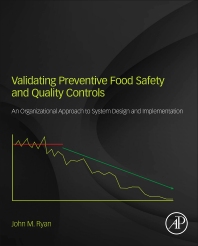It seems that almost every week, news media outlets are reporting on yet another foodborne illness outbreak. From Listeria monocytogenes in ice cream, Salmonella in peanut butter or Norovirus on a cruise ship, no food commodity appears immune to the outbreak of foodborne pathogens. Considering all of the advanced technology and preventative controls being employed from farm to fork, it seems highly unlikely that a foodborne illness outbreak would even occur in the first place. But, it does. So, why are food recalls continuing to occur despite current preventative technologies and food safety regulations?
A major fallacy concerning food recalls is that the food industry is producing less safe food. In reality, the food being produced today is safer than it has historically been. According to foodborne disease outbreak reports generated by the Center for Disease Control (CDC), a total of 13,360 cases of illness were reported in 2013 compared to 19,231 cases in 1990. However, the number of food disease outbreaks rose from a reported 533 in 1990 to 818 in 2013. The potential reasons for fewer cases of illness but increased number of outbreaks are more awareness, better enforcement of food safety practices and improved ability to identify and track cases of foodborne illness.
So, if a better job is being done by the food industry to prevent outbreaks, where and how do pathogens slip through the defenses employed to inhibit them? One source of contamination is likely the farms where many food products and ingredients are derived. Fruits, vegetables and animal protein sources, including the milk obtained from them, are produced in or on soil, which is inherently saturated with microorganisms. Though many of these microorganisms are non-pathogenic, specific microbes such as Listeria monocytogenes, pathogenic Escherichia coli (E. coli) and Salmonella species can wreak havoc when introduced into the human gastrointestinal tract. Many of these pathogens are further introduced by run-off water from farming operations, thus cross contaminating any foods that happen to come into contact directly or indirectly with run-off water.
Likewise, introduction of pathogens to food can also be attributed to human error. The food system contains many stages such as growing, transportation, processing, retail, preparation and consumption. That’s a lot of places where food is coming into contact with people. Though food manufacturers utilize good manufacturing practices (GMPs) like hand washing and wearing personal protective equipment to reduce the chance of cross contamination, persistent pathogens can still lurk about in the processing environment. That’s why food processors adhere to strict sanitation standard operating procedures, which dictate exactly how and how often to sanitize the processing equipment/environment. Coincidentally, humans can indirectly promote pathogen growth by deviating from processing controls used to meet critical limits for food safety.
Research focused on unearthing the underpinnings of foodborne pathogens has yielded an abundance of useful knowledge that is currently being applied within the food industry. Findings help to develop superior technologies, methods and regulations promoting pathogen prevention and creating an overall safer supply of food. Despite continuous research and proactive practices, it is exceedingly difficult for the food industry to foresee and prevent emerging strains of pathogens (e.g. shiga toxin-producing E.coli). Since these strains are new, and thus understudied, very little is known about their pathogenicity and how they can be prevented. Unfortunately, it usually takes an outbreak of foodborne illness, such as the 2011 outbreak of E.coli 0104:H4 in Europe, to discover these new pathogenic strains even exist.
Another crucial factor that directly affects the prevalence of foodborne illness is post-production handling of food by consumers. When an outbreak of foodborne illness occurs, it is commonplace for blame to be solely directed at the food industry. Ultimately, food safety is a shared responsibility between food growers, processors and consumers. Regrettably, many consumers lack the level of food safety education so readily instilled into employees of the food industry. Current food safety regulations fail to address educating consumers on safe food handling practices, further perpetuating cross contamination and introduction of pathogens to food. Furthermore, consumers are reluctant to accept technologies, such as food irradiation, proven highly effective at preventing foodborne pathogens. Consumer reluctance stems from a widespread fear that these technologies somehow adulterate the food rendering it unwholesome.
All in all, many opportunities exist to reduce and prevent food recalls. Ongoing research provides the food industry with innovative technologies and practices that can be utilized to more effectively prevent pathogens from being introduced into the food system. Likewise, diligence in employing preventative controls, identifying deviations and taking corrective steps (e.g. shutting down production upon a confirmed positive of Listeria spp. during environmental sampling) can help prevent, minimize and reduce severity of recalls.
Finally, consumers need to be better educated on the soundness of processing equipment as well as safe food handling. Acceptance of more highly efficient processing machinery allows the food industry to produce food. Understanding how to properly handle/prepare food will help reduce cross contamination and thus cases of foodborne illness. By seizing these opportunities, we can collectively make strides in reducing foodborne pathogens at every stage within the food system.










